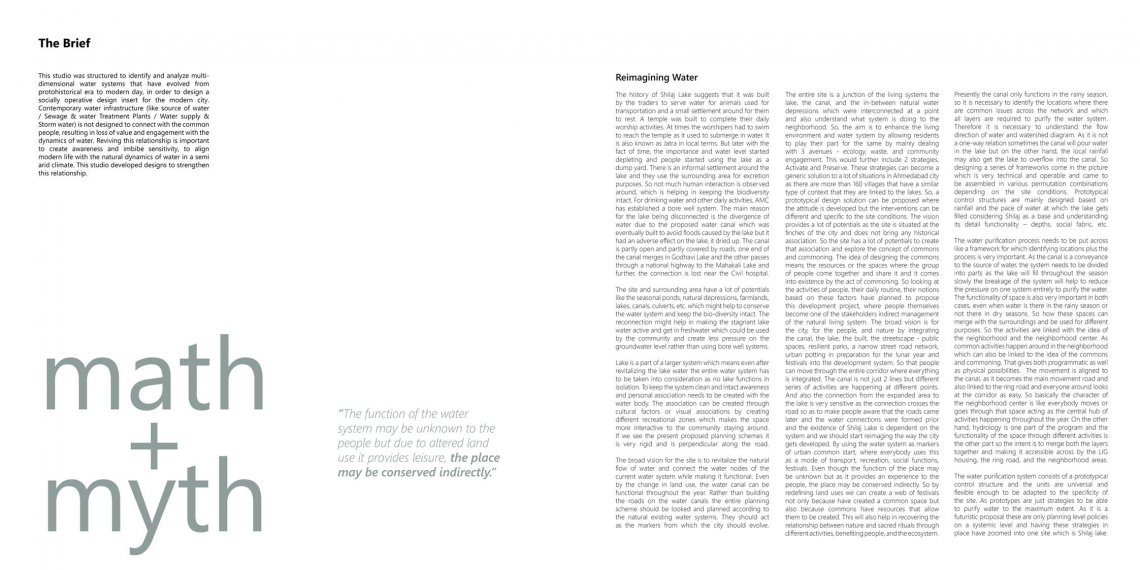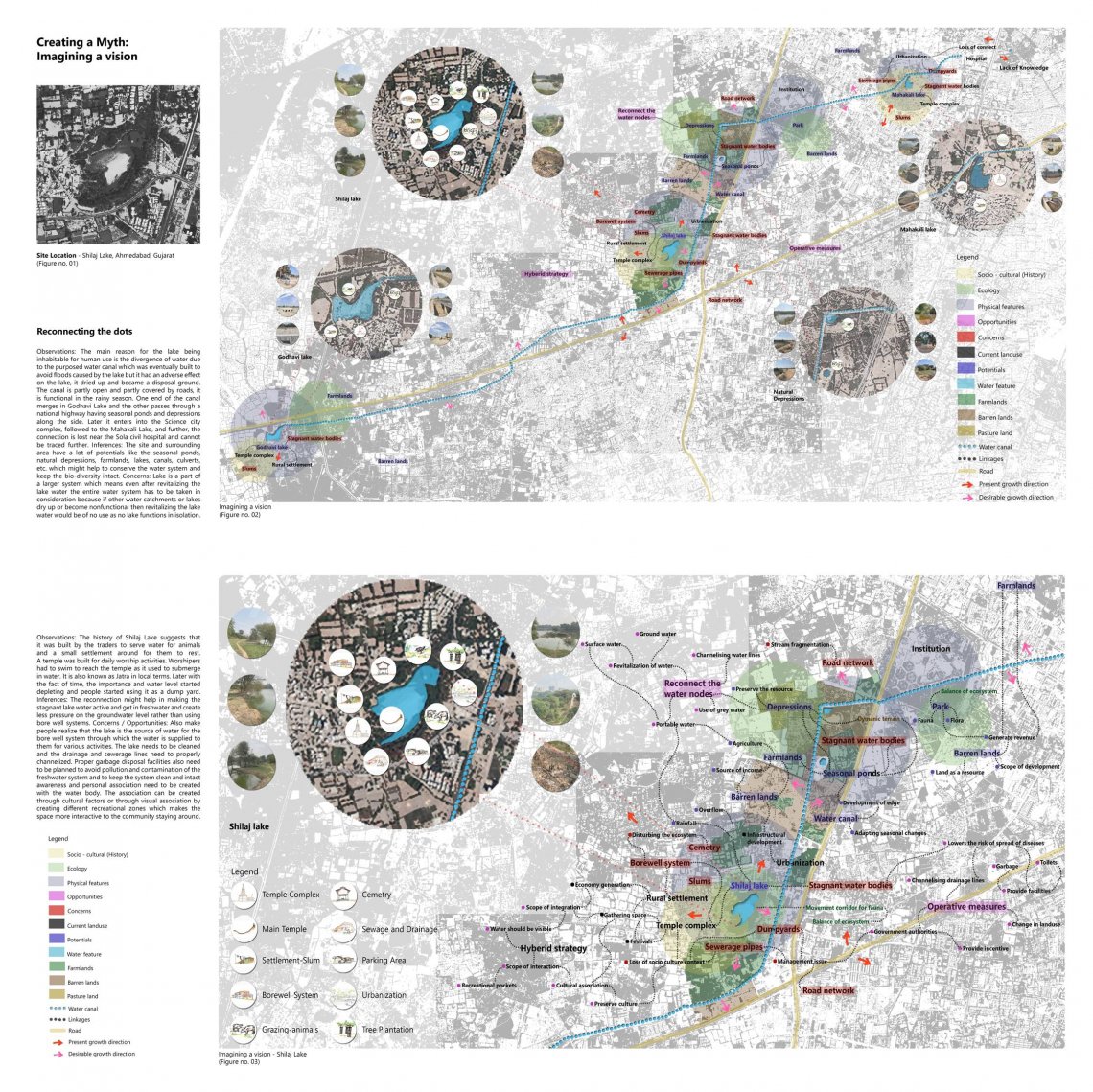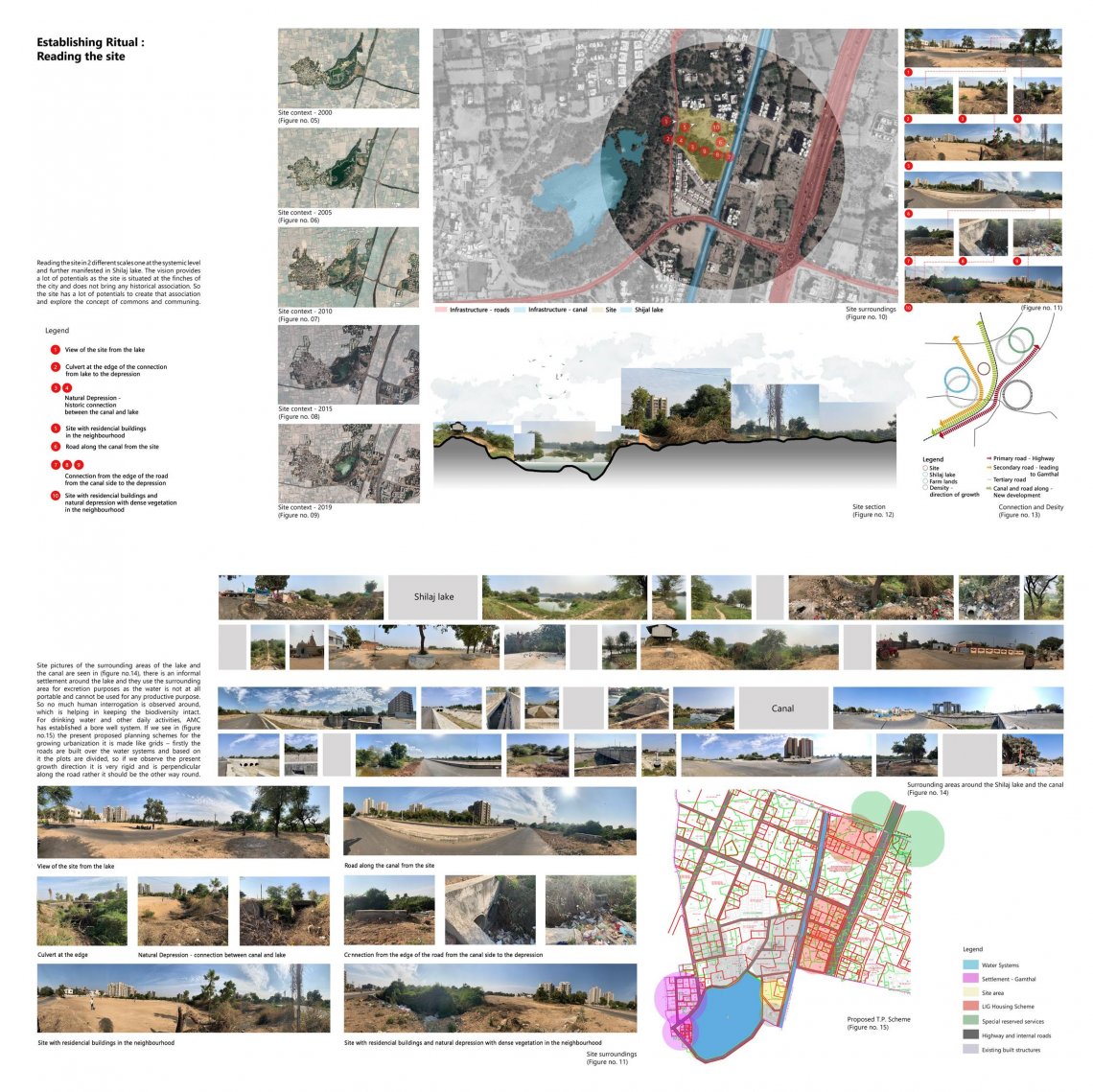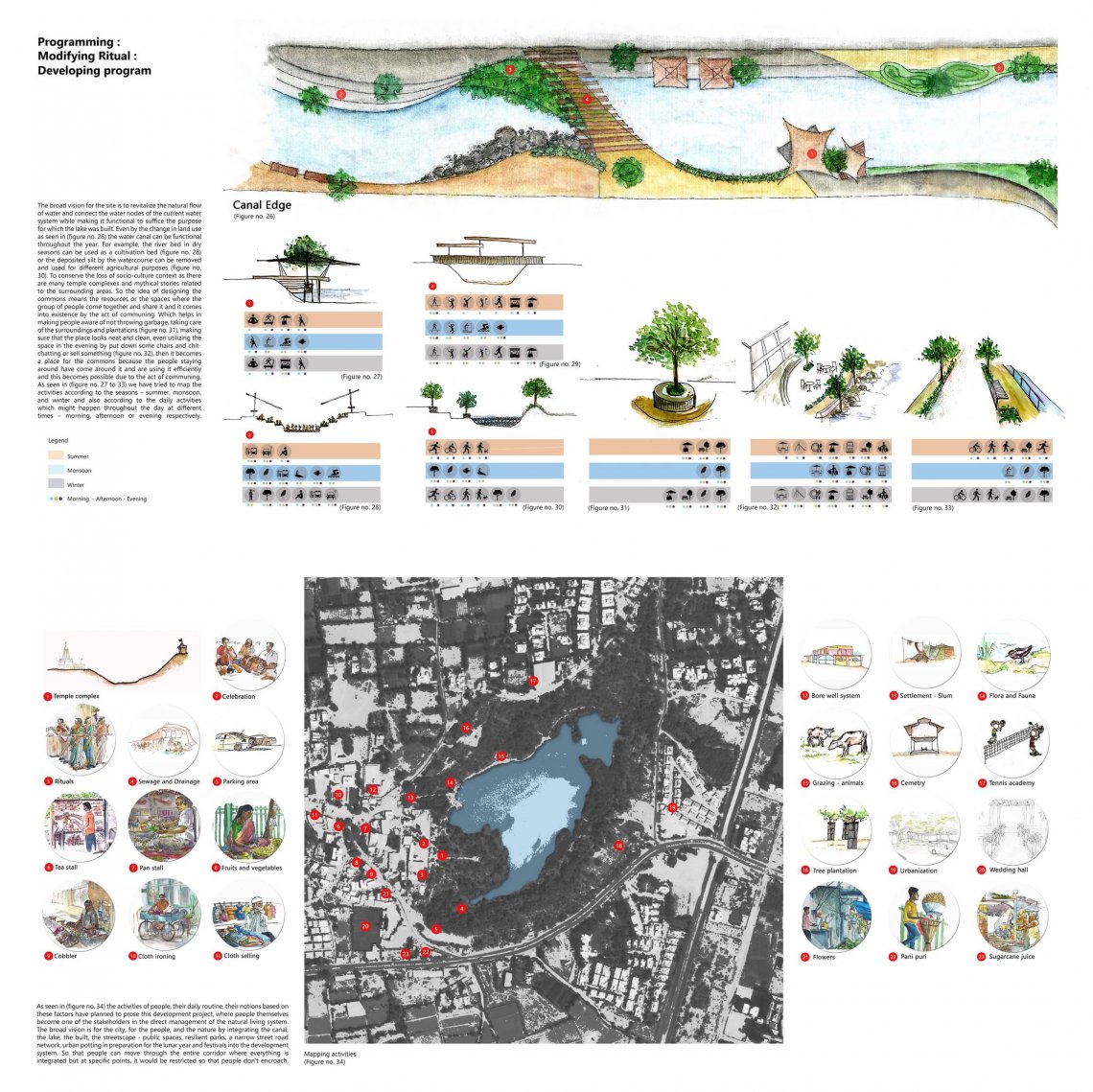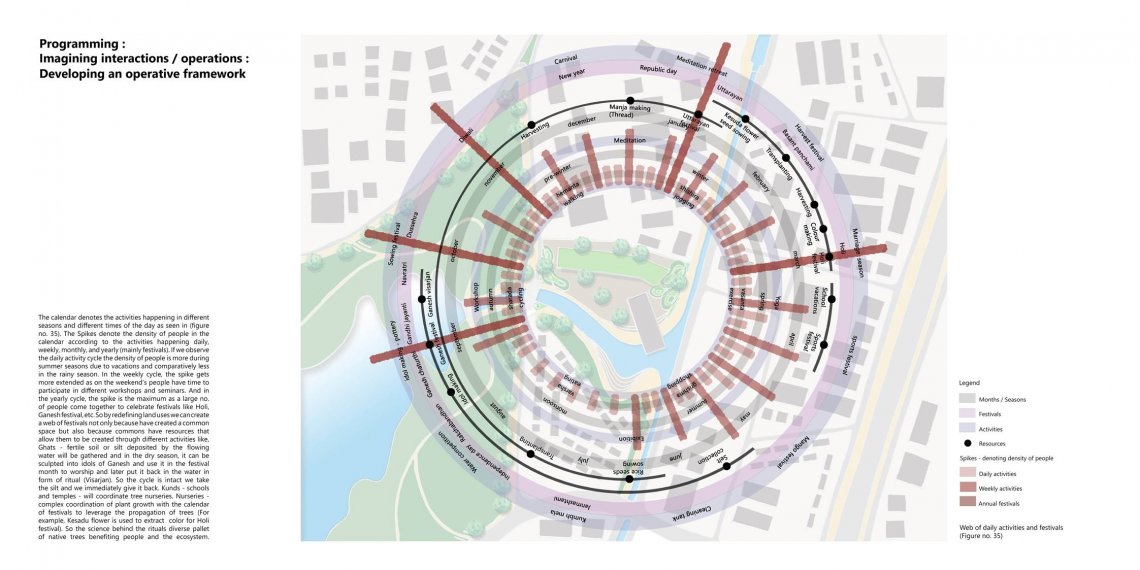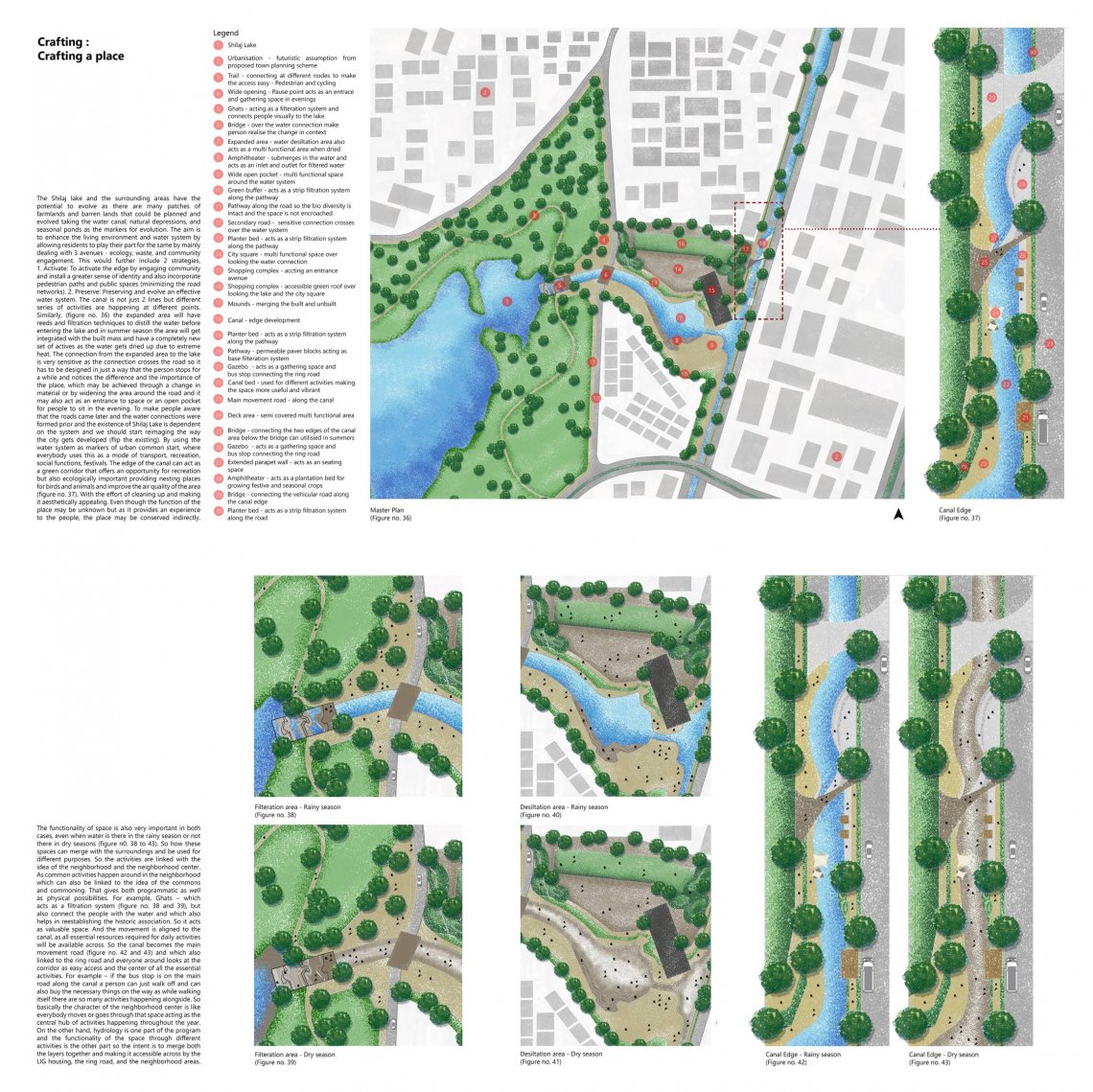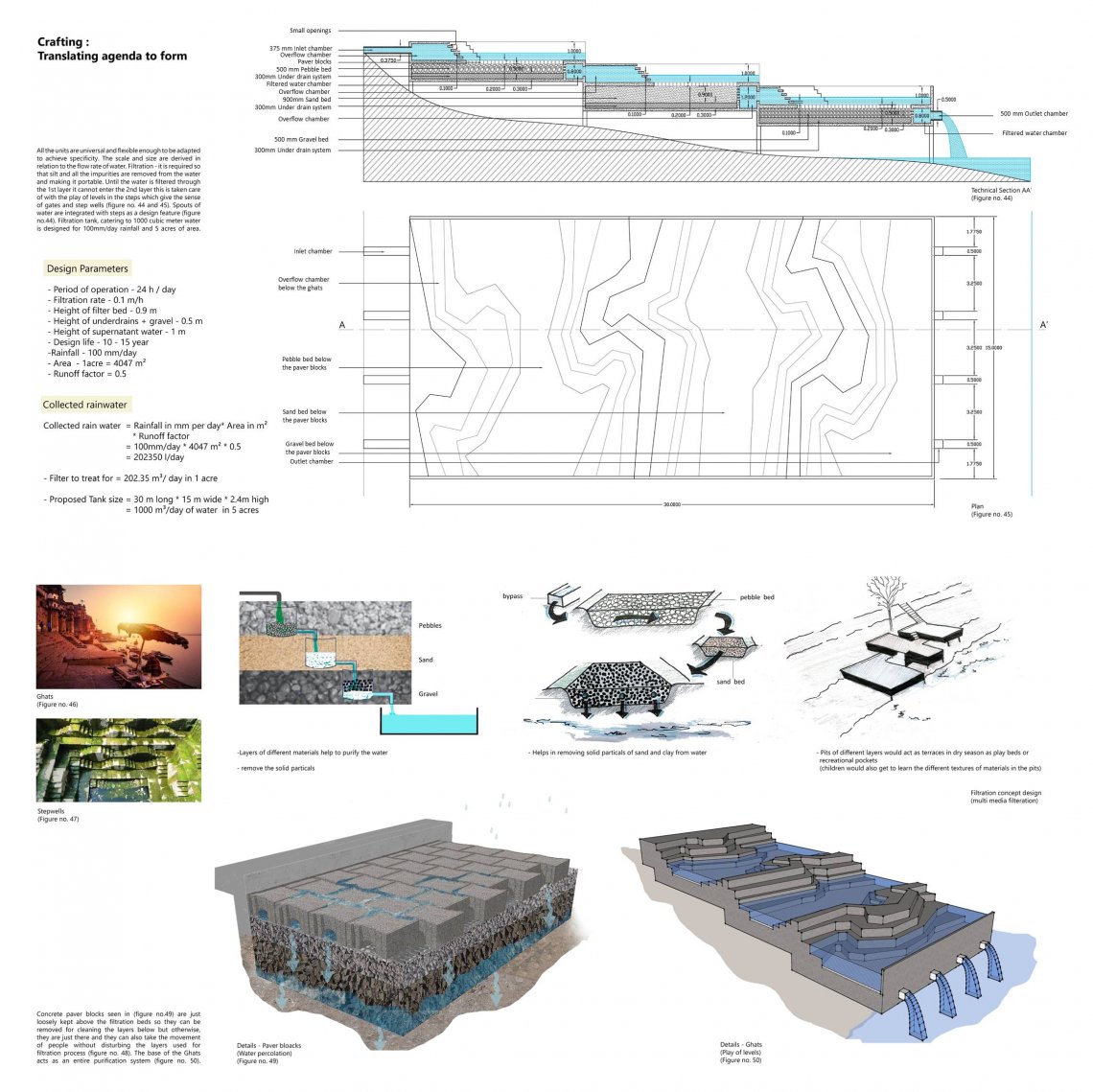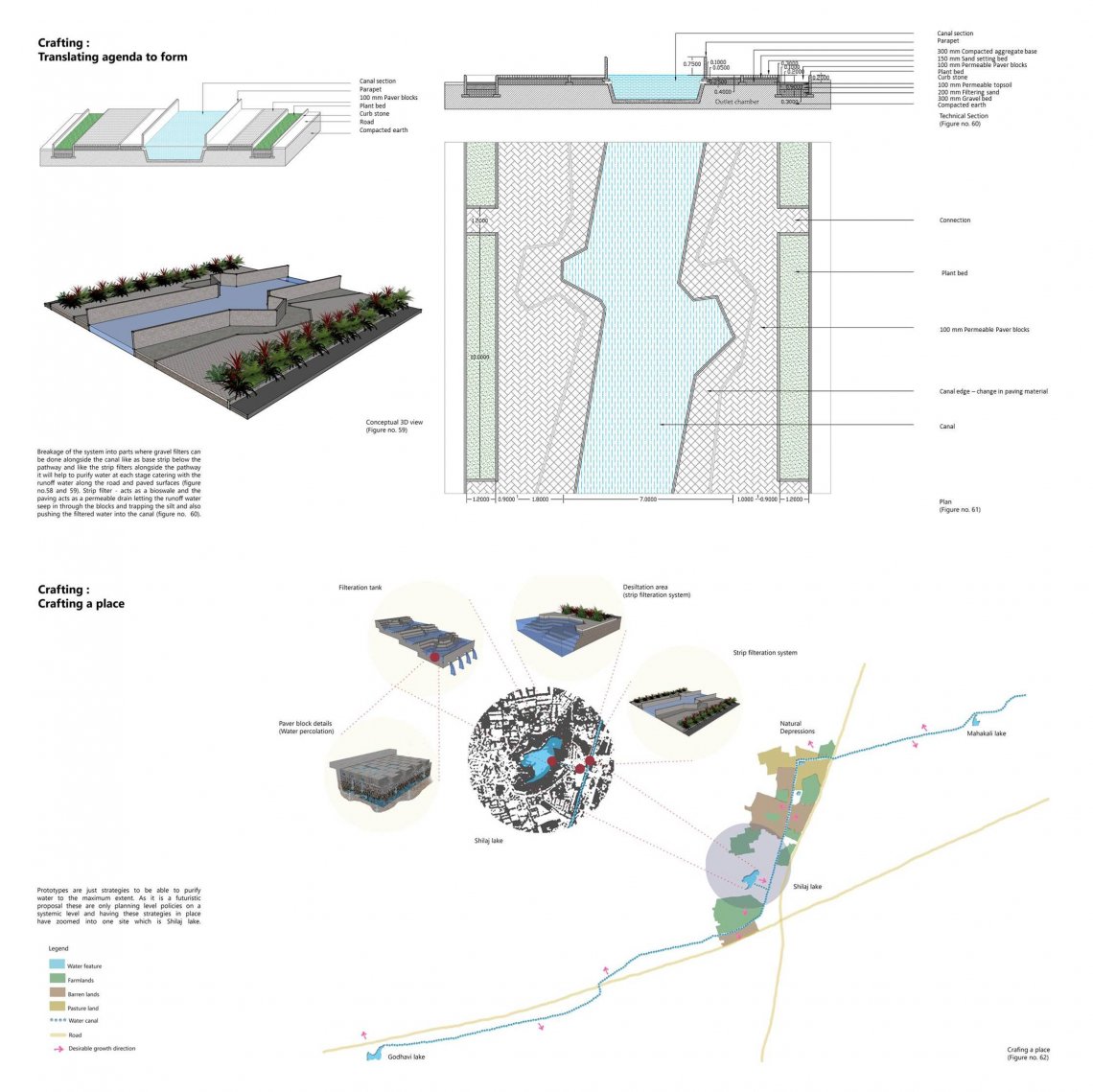Your browser is out-of-date!
For a richer surfing experience on our website, please update your browser. Update my browser now!
For a richer surfing experience on our website, please update your browser. Update my browser now!
The entire site is a junction of the living systems the lake, the canal, and the in-between natural water depressions which were interconnected at a point as no system works in isolation but also understands what system is doing to the neighborhood. So, the aim is to enhance the living environment and water system by allowing residents to play their part for the same by mainly dealing with 3 avenues - ecology, waste, and community engagement. This would further include 2 strategies, Activate and Preserve. These strategies can become a generic solution to a lot of situations in Ahmedabad city as there are more than 160 villages that have a similar type of context that they are linked to the lakes. So, a prototypical design solution can be proposed where the attitude is developed but the interventions can be different and specific to the site conditions. The vision provides a lot of potentials as the site is situated at the finches of the city and does not bring any historical association. So the site has a lot of potentials to create that association and explore the concept of commons and commoning. The idea of designing the commons means the resources or the spaces where the group of people come together and share it and it comes into existence by the act of commoning. So looking at the activities of people, their daily routine, their notions based on these factors have planned to propose this development project, where people themselves become one of the stakeholders indirect management of the natural living system. The broad vision is for the city, for the people, and nature by integrating the canal, the lake, the built, the streetscape - public spaces, resilient parks, a narrow street road network, urban potting in preparation for the lunar year and festivals into the development system. So that people can move through the entire corridor where everything is integrated. The canal is not just 2 lines but different series of activities are happening at different points. And also the connection from the expanded area to the lake is very sensitive as the connection crosses the road so as to make people aware that the roads came later and the water connections were formed prior and the existence of Shilaj Lake is dependent on the system and we should start reimaging the way the city gets developed. By using the water system as markers of urban common start, where everybody uses this as a mode of transport, recreation, social functions, festivals. Even though the function of the place may be unknown but as it provides an experience to the people, the place may be conserved indirectly. So by redefining land uses we can create a web of festivals not only because have created a common space but also because commons have resources that allow them to be created. This will also help in recovering the relationship between nature and sacred rituals through different activities, benefiting people, and the ecosystem.
Link to Portfolio:
https://drive.google.com/file/d/1U-jcehhIi5XoV-Ti_553DqeZ1Uisvoo1/view
